Duration: 1 – 5 hours
Plastic surgery has become a trend in the last decades, and the most famous of which is rhinoplasty with a huge demand on it all over the world. For this reason, some less experienced surgeons claim they are able to do this delicate surgery, causing great numbers of patients to be unsatisfied with their results and making it mandatory for them to resort to another surgery to fix the bad results of the previous one in what is called revision rhinoplasty or revision nose job. Many of those choose to opt for revision rhinoplasty in Iran because of the high reputation of the Iranian surgeons in plastic surgery in general and in rhinoplasty in particular.
Hear about our revision rhinoplasty patients’ experiences in Iran: They have so much to share.
Watch these revision rhinoplasty stories from different patients around the world to see why people choose Iran for their cosmetic surgeries and how AriaMedTour facilitates their medical trip to Iran.
A medical trip documentary:
Crossing borders for a unique beauty adventure
If your nose job fails, you can always go to
Iran for a professional revision
A perfect nose job:
A great long-lasting souvenir of Iran
Why do people choose Iran for
their revision plastic surgeries?
Having a nose job couldn’t be
better than this anywhere else
Iran, the nose job capital,
the heaven for revising a botched one
All inclusive Rhinoplasty Packages in Iran
Nose Surgery Prices
| Procedures | Price (USD) |
| Septoplasty Closed Method – Septoplasty is a surgical procedure to straighten the bone and cartilage dividing the space between your two nostrils (septum). |
from $1390 |
| Septorhinoplasty Open Method – septorhinoplasty is surgery to fix both your nose (also called rhinoplasty) and your nasal septum (also called septoplasty). |
from $2390 |
| Balloon Sinuplasty Endoscopic Sinus Surgery – Balloon sinuplasty is a type of endoscopic nasal surgery. |
from $1590 |
| Closed Rhinoplasty Method: No Visible Scars – A closed rhinoplasty technique makes all incisions within the nose, leaving no visible scars. |
from $2050 |
| Open Rhinoplasty Method: Visible scars – Open rhinoplasty involves creating an incision along the width of the columella and lifting the skin so as to allow greater visibility and increased precision. |
from $1650 |
| Secondary Rhinoplasty Revision Rhinoplasty (Open Method) – Revision rhinoplasty is a surgical procedure that revises or corrects a previous surgery |
from $1950 |
Nose Surgery Prices
| Procedures | Price (USD) |
| Septoplasty Closed Method – Septoplasty is a surgical procedure to straighten the bone and cartilage dividing the space between your two nostrils (septum). |
from $1390 |
| Septorhinoplasty Open Method – septorhinoplasty is surgery to fix both your nose (also called rhinoplasty) and your nasal septum (also called septoplasty). |
from $2390 |
| Balloon Sinuplasty Endoscopic Sinus Surgery – Balloon sinuplasty is a type of endoscopic nasal surgery. |
from $1590 |
| Closed Rhinoplasty Method: No Visible Scars – A closed rhinoplasty technique makes all incisions within the nose, leaving no visible scars. |
from $2050 |
| Open Rhinoplasty Method: Visible scars – Open rhinoplasty involves creating an incision along the width of the columella and lifting the skin so as to allow greater visibility and increased precision. |
from $1650 |
| Secondary Rhinoplasty Revision Rhinoplasty (Open Method) – Revision rhinoplasty is a surgical procedure that revises or corrects a previous surgery |
from $1950 |
Before & After Photos
Take a look at ‘before and after’ photos of people who got their revision nose jobs done in Iran.
What We Offer
- Revision Rhinoplasty
Clinic and doctor visits, medical tests, medical photography, nose surgery in hospital, post-operative care, medicines*, recovery, and follow-up - T-Visa Authorization Code
T-visa authorization code. (Note that there is a separate visa fee that the patient must pay when receiving the visa, which it is not part of this package).
- Pick-up & Transfer
Airport pick-up, private transfer from hotel to clinic/hospital and vice versa - Accommodations
Three-star to five-star hotel offered which is preferably near the clinic or hospital (At the patient's expense) - Other Services
24-hour on-call assistance, interpreter, SIM card and internet
Note: The medicines and other aftercare items included in this package are the necessary items prescribed by the surgeon.
Also, the doctors and hotels and clinics which are included in the package are offered by AriaMedTour to the patient. There may be other doctors whom the patients are considered and the price might be different. Based on a new policy of the Ministry of Foreign Affairs, the citizens of the USA, UK, and Canada are included in different logistic services.
Your detailed schedule after arrival in Iran
>> Day 1: Arrival at airport: you will be welcomed by our guide, then picked up and transferred to hotel*. Checking into hotel; Transfer from hotel to clinic; Visiting the doctor; Pre-op tests/images; Transfer from clinic to hotel
>> Day 2: Transfer from hotel to hospital; Preparations for surgery; Conversation between doctor & patient, reviewing the expectations; Performing of surgery; Post-op recovery at hospital; Taking doctor’s instructions; Transfer to hotel
>> Day 3: Rest in hotel; Taking post-op medications; following instructed diet; Follow-up through doctor’s assistant
>> Day 4: Rest in hotel; Follow-up through doctor’s assistant, checking patient’s condition; Starting daily walking (30 min/day)
>> Day 5: Rest in hotel; Regular eating restarts; Daily walking
>> Day 6: Taking shower at hotel and preparing for nose splint removal**; Transfer from hotel to clinic; Check-up and splint removal ***(by doctor); Medical photography****; Doctor instructs patient how to tape the nose at home; Reviewing post-op instructions and dos & don’ts; Receiving written certificate from doctor confirming patient is fit to fly; Transfer from clinic to hotel
>> Day 7: Transfer from hotel to AriaMedTour office*****; AriaMedTour gives patient special gift; Start of permanent follow-up through communication channels.
>> Note:
* Transfer from the airport to the hotel will be with the taxi.
** This is a rough estimation and it may be a day sooner or later.
*** It may be done by the doctor assistant (aide) based on the doctor availability but this will not be a problem because it is an ordinary job.
**** It may be needed or not depending on the doctor diagnosis.
***** In some cases where your departure is in the weekends this step may not be feasible.
If there would be a need for the artificial graft in the nose job that would be done with an extra cost.
About our hotels
We work with a select group of three- to five-star hotels in Tehran and other cities. Depending on the type of package you choose and the location of the hospital or clinic where you are going to receive the treatment, we arrange the most suitable hotel for you. The name, details, and photos of the hotel will be sent to you ahead of time.
Why have revision rhinoplasty in Iran?
Iran is known for its good reputation for preforming all types of medical procedures, especially nose surgeries. According to the latest statistics, Iran has the highest rate of nose jobs in the world, as rhinoplasty is one of the most popular surgical procedures throughout the world and Iran appears to be the center of attention when it comes to nose jobs, with as many as 200,000 people a year going under the knife. Due to the high success rate thanks to the experienced and skilled surgeons, and the low cost of revision rhinoplasty in Iran, thousands of people travel every year to undergo rhinoplasty and revision rhinoplasty after having a botched nose job somewhere else (see the cases of Veronica, Julia, Ian, and Seba). This is while the satisfaction rate is high among patients receiving rhinoplasty in Iran, mainly because of the professional competence of Iranian nose surgeons. This makes patients less likely to have to undergo a second surgery in the future.
Why choose AriaMedTour?
AriaMedTour services are provided 24/7. Our online consultation specialists reply at once. We take care of all the details of the patient’s medical trip. We also provide other services like interpretation, airport pick up, local transfer, providing a place to stay and many more. All you need is just contacting us, and we will take care of everything.
How much is the cost of Revision Rhinoplasty in Iran?
Revision rhinoplasty is generally more expensive than the first rhinoplasty because it is more complex and requires more time than the primary rhinoplasty. If a primary rhinoplasty costs around $7,500, a revision nose job may cost around $10,000 to $15,000 worldwide. The good news is, a revision rhinoplasty in Iran can be done with as low as $1,750 and it may reach $2,500 in certain complex cases.
How can I get my revision nose surgery arranged with AriaMedTour?
First of all, you should send your request through one of our communication channels (online form, WhatsApp, email, online chat, etc.). We will assign a personal coordinator and consultant to you who will guide to through all the process, step-by-step. During the correspondence, you may be asked to send photos of your nose for a more accurate price quote and choosing the most suitable surgeon. Finally, after you’ve decided to have a trip and surgery arranged, we will do all the arrangement for you.
Haven’t decided yet? Let us help you, it’s free
Revision rhinoplasty in Iran: All you need to know
A common question always rise in some minds: What is a revision rhinoplasty? The short answer is revision nose job is a surgical procedure considered by many patients either to have a better nose shape, or to treat respiratory problems or to improve the results after having one or more previous nose job surgery with unsatisfactory results.
Why do patients consider a revision rhinoplasty?
Patients who tend to have a revision rhinoplasty can be categorized in two groups. The first one include people who focus mainly on the beauty of the nose and are looking for certain types of nasal correction, especially after a failed rhinoplasty. The other group includes people who seek getting a revision nose job to improve the shape of the nose while fixing health problems caused by their primary rhinoplasty or not fixed by it. These problems include breathing issues, over-rotated tip, nasal valve collapse, asymmetric nostrils, wide nose, crooked nose, long nose, birth defects, Polly beak, deviated septum, nose bumps, collapsed bridge, sinus problems, nasal collapse and/or deformity, sleep apnea and/or snoring.
What does revision rhinoplasty involve?
Revision rhinoplasty is more complex than primary rhinoplasty, as repairing a damage caused by a previous surgery is always challenging. The surgical procedure is performed under general anesthesia; however, in rare cases, the procedure can be performed under sedation and local anesthesia. Before preforming the surgical procedure, an open or closed approach will be chosen based on the unique case. In most cases, the surgery will be performed as an open procedure, which starts by making a small incision between the nostrils so that the skin can be lifted allowing the surgeon to access the delicate tissues, cartilage and bones responsible for the appearance of the nose and to reshape the required sections along the nasal bridge, tip, and nostrils. Afterwards, the surgeon corrects any obstructions in the airway before sealing the wound with several stitches.
In simpler procedures, the surgeon may only have to remove excess tissue or cartilage that may have been missed in the original surgery. Furthermore, where necessary, the bone may be fractured in a controlled way, in order to straighten out a crooked nasal bridge.
Success rate of revision rhinoplasty in Iran
Most patients achieve amazing results, and it all depends on the patients’ expectations in the first place. However, the fact remains that revision nose job is a complex procedure that requires master knowledge of the anatomical structure of the nose as well as high practical skills.
Is revision rhinoplasty dangerous?
There are some risks and complications that the patients should be aware of before undergoing the surgery, such as:
- Bleeding is one of the most common risks of rhinoplasty or a revision rhinoplasty, since blood vessels may be damaged during each surgery. Blood loss is common while undergoing any surgery and only very few patients may experience significant post-surgery blood loss.
- Reactions to anesthesia, which can be avoided by choosing a highly qualified anesthesiologist to administer general anesthesia. That is why a physical exam prior to the surgery is necessary.
- Nasal blockage or a similar sensation can occasionally occur. As the nasal contours are reshaped, changes may need to be made to the septum and, in some cases, the overall size of your nose may need to be reduced.
- Infection is a rare risk that can be avoided by choosing an experienced surgeon. To help prevent problems due to infection, patients are instructed to watch for symptoms, such as excessive swelling, fever, odorous nasal discharge or pain, and contact their surgeon right away if any of these symptoms is observed.
How long does it take to recover after a revision rhinoplasty?
There is a certain timeline for recovery after revision nose job, as the patient is required to reduce their physical activity for six weeks after the surgery. Moreover, a splint might remain in place for a few days after surgery, and there will be some degree of nasal congestion and swelling afterwards, which will take about 2 weeks to start subsiding. However, it may take a complete year for the healing process to complete and for the final shape of the nose to show up.
How long does it take for swelling to go down after revision rhinoplasty?
Swelling and bruising are common after a revision rhinoplasty, and most of the swelling resolves in about two weeks, with the remaining swelling resolving in a matter of months.
What is grafting and what materials are used for grafting in revision rhinoplasty?
Grafting refers to a surgical procedure that involves moving tissues from one site to another from the same body, or from another individual.
One of the main goals in revision nose job is to restore the structural support of the nose and to replace lost tissues. In order to achieve this, the surgeon must rely on grafts mainly. Many grafting materials are available in revision rhinoplasty, and each type has its own unique physical, chemical, and biological properties. Surgeons believe that grafting materials must be resistant to trauma, easy to sculpt, resistant to infections and extrusion, and stable.
The most common types of grafts are known as autogenous grafts, which are taken from the body of same patient during the surgery and placed in its intended place in the nose after appropriate handling. These grafts are the most favorable due to their long-term clinical outcome and their low possibility to be rejected or become infected. Autogenous grafts are known as non-synthetic grafts, and they include cartilage, bone and subcutaneous tissue.
Why rib grafts are preferable?
While a cartilage graft can be harvested from the nasal septum, there often is not enough of the material available in that region to harvest and use as grafting material in revision rhinoplasty. In these cases, cartilages can be harvested from other parts of the body such as ribs as cartilage can be obtained from the ribs in larger quantities when required. Furthermore, cartilage can be used in multiple ways while being reshaped, and it is less likely to be rejected or become infected as it comes from the patient’s own body.
What to do before considering a revision rhinoplasty?
1. Make sure your nose if fully healed from the previous surgery
First and most importantly, take all the time you need for your nose to fully recover after your previous nose job before undergoing a revision nose job. Generally, it is recommended to wait for one year before undergoing a revision rhinoplasty since nose job surgery takes a full year to heal.
2. Consult an expert before considering a revision rhinoplasty
Undergoing a revision rhinoplasty mainly depends on the:
- Dissatisfaction caused by the first rhinoplasty
- Amount of the nasal septum removed during initial procedure
- The quality of the nasal airway, and the skin of the patient.
3. Choose your surgeon carefully
A revision rhinoplasty is more delicate than the primary rhinoplasty, as many additional issues should be taken into consideration, which requires a highly experienced plastic surgeon or ENT surgeon.
What to do to speed up the recovery process?
1. Follow the doctor’s instructions
Listen carefully to what the plastic surgeon has to say, as you will receive specific instructions on what medications to take, and how to take care of the wound in order to avoid infection.
2. Don’t hesitate to ask for professional assistance
If something does not feel right during the recovery period, or you are experiencing any type of unwanted symptoms, discuss it with your doctor right away.
3. Sleep only on your back and keep your head elevated at all times
Sleeping on your side after having a revision rhinoplasty can cause more swelling and bruising. It might also displace your nose in rare cases. To avoid this, you will need to keep your head elevated at night for 6 weeks after the surgery.
4. Apply cold compresses
Using cold compresses can significantly reduce the swelling in the first 72 hours after the surgery, as long as it is being applied carefully to the swollen area.
5. Get plenty of rest
Rest is a vital part of the recovery process, as the body needs energy to heal itself.
6. Maintain a healthy diet
Make sure your body gets all the nutrition needed for the healing process, whether by eating fruits and vegetables or by using supplements.
7. Avoid touching your nose or wearing glasses
After surgery, you are going to have to resist the urge to blow your nose, as the experienced nasal congestion is caused by the swollen nasal tissues. Instead, contact your doctor and ask him/her about using a saline nasal spray to moisturize your nasal passages until the swelling goes away. It is also advised to switch to contact lenses instead of wearing glasses, as glasses are known to put pressure on the nose, which might cause additional bruising or swelling. If you cannot use contacts, consult with your surgeon to decide on a suitable type of glasses that is specifically designed to be used after rhinoplasty.
8. Allow your body to take all the time needed to heal
Don’t rush things, be patient and have faith. Your nose will heal eventually, and you will have the expected results in the right time.
Frequently Asked Questions About Revision Rhinoplasty
Is revision rhinoplasty recovery painful?
It is very normal to experience bruising, swelling, and minor bleeding from the nose. However, the pain during the recovery process is fairly mild, according to most patients.
How soon can revision rhinoplasty be done after the primary one?
Each person heals differently, but it is advised to wait for at least between 10 months and one year before considering having revision rhinoplasty after undergoing the last nose job.
How long does revision rhinoplasty take?
Revision rhinoplasty generally takes from 2-4 hours, and it is performed under general anesthesia.
How long should I stay in Iran to get my revision rhinoplasty done?
Even though the surgical procedure takes only 2-4 hours, it is advised to stay for an entire day in the hospital and for at least a week in Iran before going back to your country so that the surgeon makes sure everything is going well after the surgery.
Check out the complete list of questions about Rhinoplasty
Contact Us Via Whatsapp
Feel free to express your opinions or ask your questions.

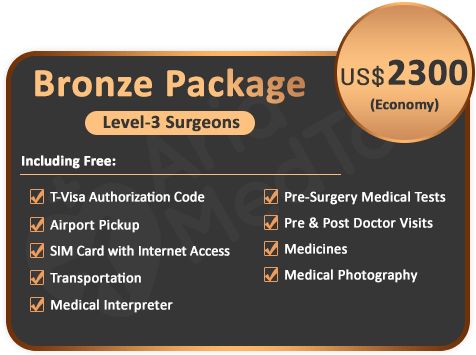

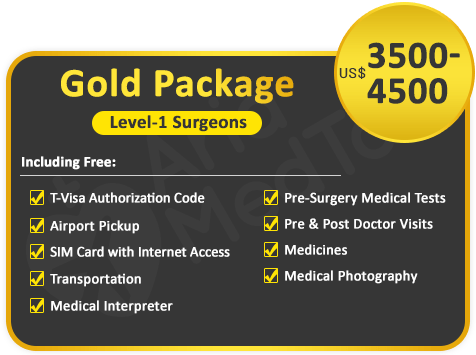
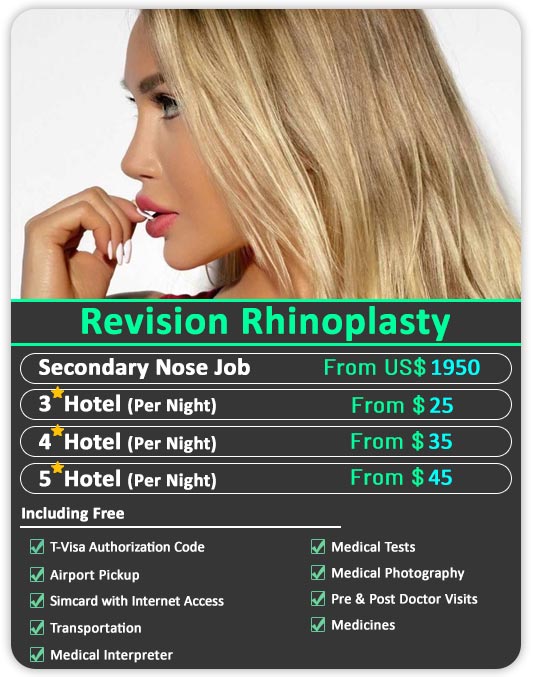

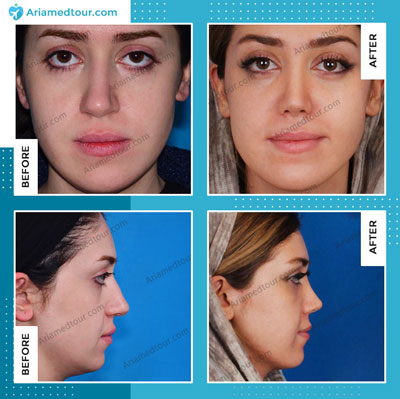
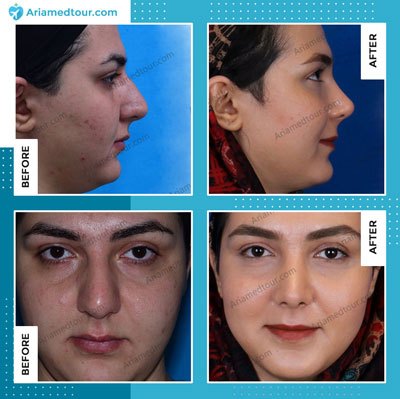



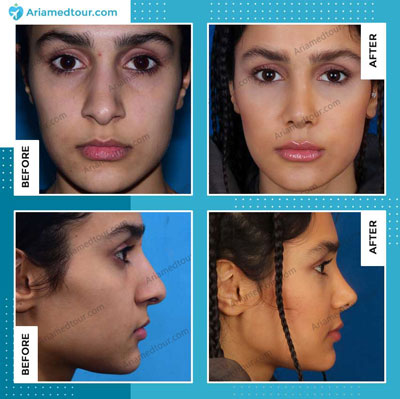

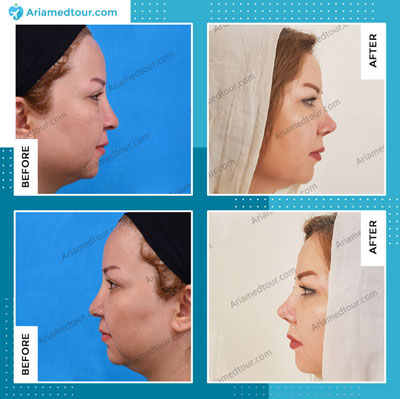
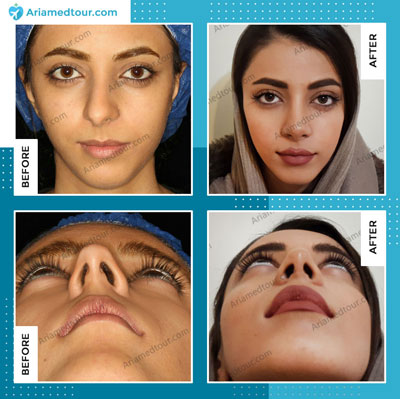

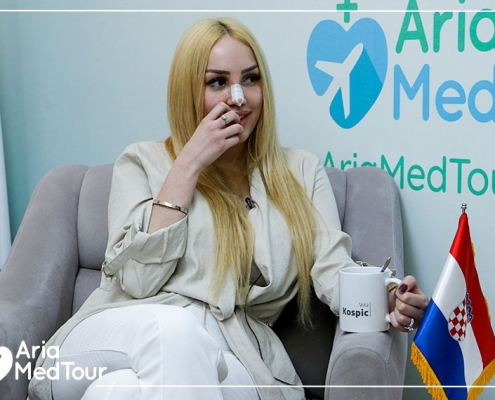
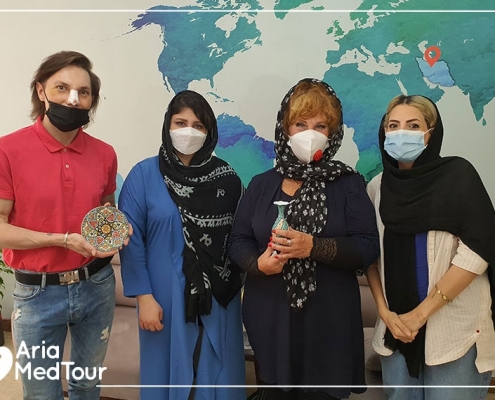
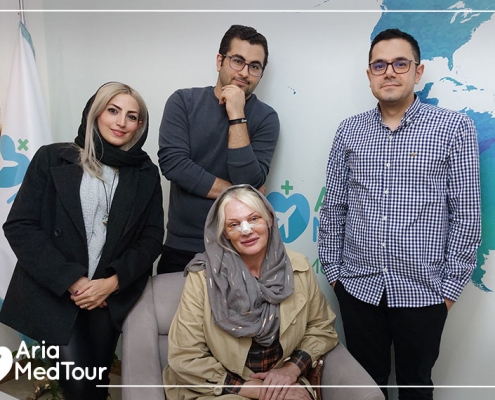
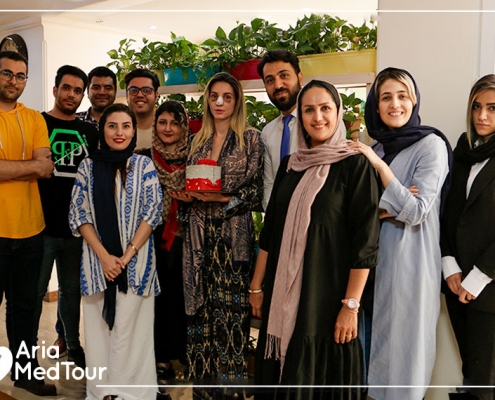







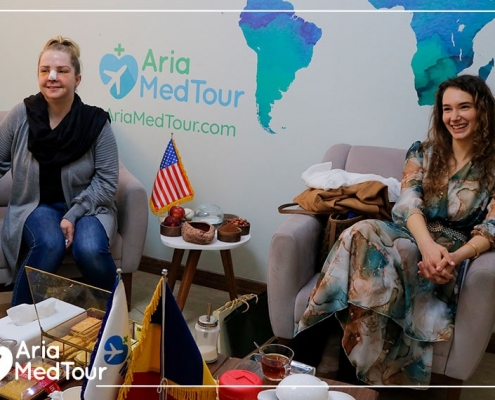

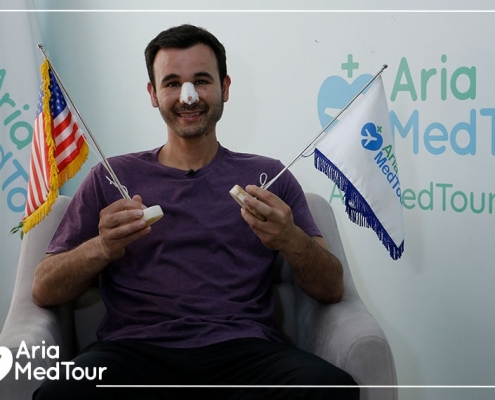
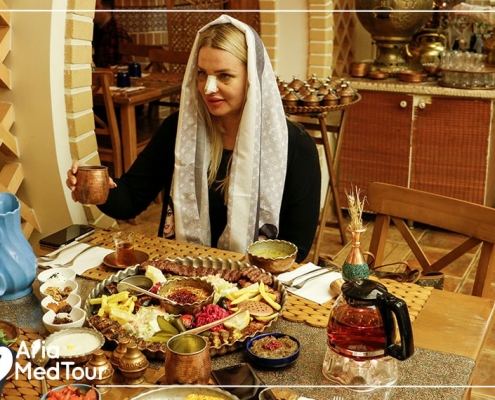
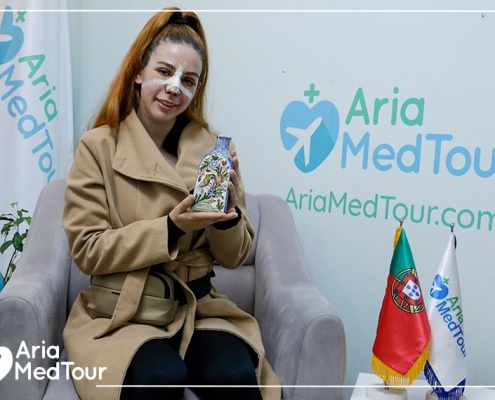

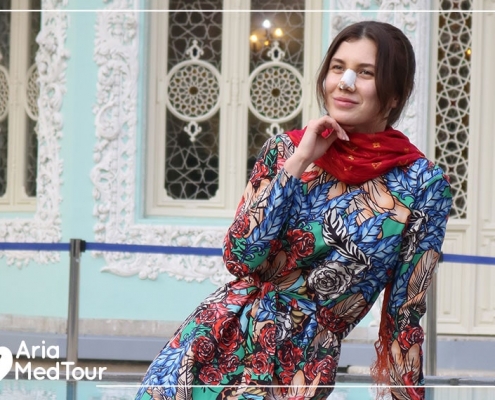

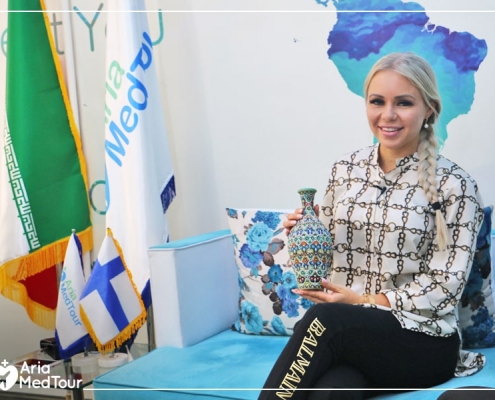

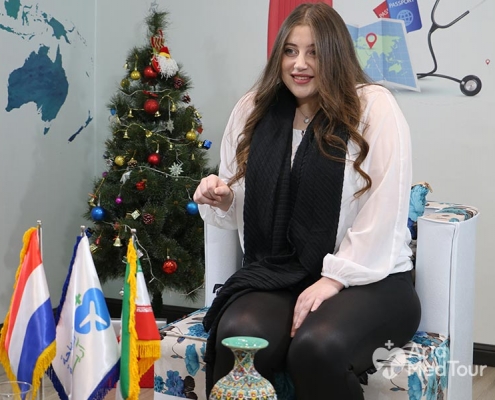
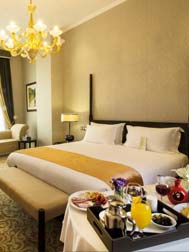

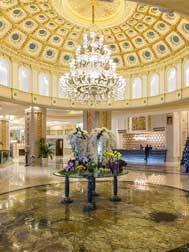


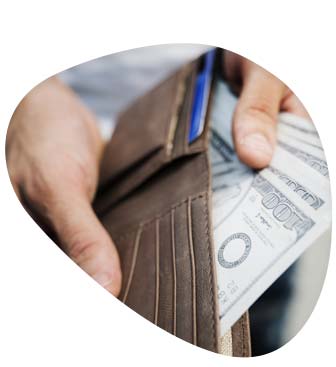
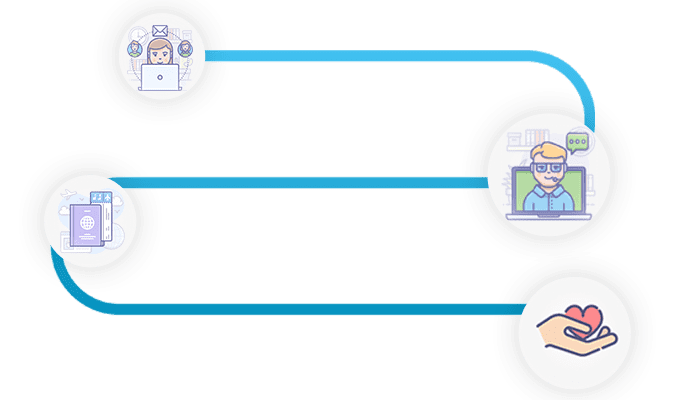
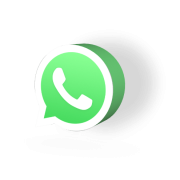
How awful would it be to get a nose job for the third time? Is it even possible?
It’s not like i’m obsessed with my nose and am looking for some fancy celebrity look. I just want my crooked nose to be fixed and symmetrical but it failed the last two times. Is it too difficult to straighten a crooked nose? I’m afraid it won’t get fixed even with the third surgery. It’s been 4 years since my revision rhinoplasty so i’m pretty sure there’s nothing to do with the swelling. It’s just not even and i’m afraid a third rhinoplasty won’t be possible or cause my nose to fall off. I’ve been reading terrible things about people with multiple cosmetic procedures. Please tell me if another rhinoplasty works for me. And should i have it with the same surgeon or would you recommend a new one? Thanks.
Yes, correcting deviated and crooked noses are actually one of the most challenging maneuvers of rhinoplasty, and in some cases, it can get fixed through multiple procedures. If your nose deviation is significant, another nose job may be a good decision.
A third (and even more) rhinoplasty is possible and can be recommended for some cases, but not everyone is a good candidate (risks outweigh the advantages). I’m not talking about your nose falling off or other terrible stories, but you should notice that revision procedures get more difficult each time and come with more risks and complications (such as scar tissue, improper healing, unnatural results, etc.) and decreased chance of success (not meeting all expectations). I highly recommend that you have an in-person visit with an experienced revision rhinoplasty surgeon to discuss your expectations and evaluate your success rate, this is the best way to find out if you’re a good candidate. You can then decide if the benefits outweigh the risks.
And no, you don’t have to get your procedure with your previous surgeon, and I wouldn’t recommend it unless you make sure he/she is an expert in revision rhinoplasty. Even a very good rhinoplasty surgeon may not be a good one at revisions. It is important to take time to find the best surgeons in the field of revision rhinoplasty with hands-on experience in multiple revisions, considering the challenges of such procedures. This way you can get a realistic idea of what your procedure can bring about and make sure you’re in good hands if you decide to have your third rhinoplasty. If your previous surgeon is an expert in this field, feel free to consult them again.
Will an over-rotated nose get fixed through revision rhinoplasty?
I had asked my surgeon for an almost natural look. Well, i did want my droopy nose to get fixed but didn’t ask for a pig nose!!! Too upturned and my nostrils are exposed. I hate it. I had a rhinoplasty 5 days ago and can’t help but think about a second one. But does it even get fixed? When can i have it?
Thanks for your question. I understand your concern but 5 days is too early to judge the results. So please don’t panic and give it time. It’s actually common for the nose to look too upturned at this stage as you’re experiencing substantial swelling in the base of the columella, upper lip, and nasal tip which causes it to look more upturned. Moreover, the splint and tape also give the impression of an over-rotated nose. As you remove the splint and the major swelling diminishes, you can expect to see much difference. While swelling significantly comes down within the first few weeks, it usually lingers on for a year or even more and that’s when the final shape of your nose will be revealed. That’s why we usually advise our patients to wait at least 12 months before considering revision rhinoplasty. What bothers you now, may be perfectly resolved by then.
And yes, it is possible to fix an over-rotated nose through revision rhinoplasty. Grafting will be required to provide the supporting tissue and make up the structure. Please be patient and do not worry about your surgery results yet. However, make sure you discuss your concern with your surgeon in your follow-up sessions and if your concern persists, you can consider having a secondary procedure with an experienced surgeon in revision rhinoplasties as this is a very delicate procedure.
Hi, I went through a rhinoplasty 3 years ago which didn’t turn out to be satisfactory. I think my nose is too short and the tip needs some refinement too. I’m considering a revision rhinoplasty and the doctor said cartilage grafting will be required to rebuild the nose, possibly from the ear or the rib. That sounds like a very complicated procedure. I worry if the cartilage grafts can not provide a natural look and will be visible under the skin, or if they warp and cause deformity. I’m wondering if this is gonna work and make it better at all and if yes, which one will be more effective and less risky.
Good question. I appreciate your concern, however, you do not need to worry about the idea of using ear/rib cartilage to rebuild the nose structure. While complicated, it’s a very common technique in revision rhinoplasties requiring augmentation with insufficient support tissue. Cartilage during primary rhinoplasty is often taken from the septum, but for revision procedures, the surgeons usually resort to harvesting grafts from other parts of the body for which the ear and rib are of best donor sites. Ear cartilage has many advantages and is a great option but only for minor revisions and contouring. Being placed close to the nose, the harvesting procedure is much simpler with minimal risks and short recovery which does not leave a visible scar as it will be well-hidden under the ear creases. But it’s not as strong, stiff, and straight as the rib cartilage and can’t be used in larger quantities. For major reshaping, however, the patient’s rib is the best source which provides perfect strength and straightness in the required length and quantity. While it may come with a less hidden scar on the abdomen (still, usually better hidden under the breast in female cases) and a more difficult recovery compared to the ear cartilage. It works perfectly for complex revision rhinoplasties.
Risks are inherent components of any surgery. Accordingly, there are some risks associated with cartilage grafting of any kind such as extrusion, warping, and being visible under the skin as you mentioned, but they’re very uncommon and rare. Such risks will be minimized especially if a skillful surgeon applies the technique.
After all, I recommend a personal visit with an experienced revision rhinoplasty surgeon to undergo a thorough examination and decide how you can achieve your rhinoplasty goals and which cartilage grafts can help you best to come out with a natural look.
I had a revision rhinoplasty 2 months ago and am happy with the overall look of my new nose. It’s just that the nostrils are asymmetrical and i wonder if they can be corrected, preferably without surgery as it would be the third time. I have heard filler injections can help. How effective are they?
Yes, asymmetrical nostrils are possible to get corrected but you should know that perfect symmetry is often very difficult and sometimes not possible to achieve so if you’re describing a minor asymmetry, you might want to avoid further interventions as the risks may outweigh the advantages.
Filler injections are mainly used to help with straightening minor dorsal irregularities and slightly improving the tip by creating the illusion of a narrower or raised nasal tip. Filler injection to improve nostrils asymmetry is possible but it’s not always the best solution. You should also bear in mind that filler effects are temporary and you need to repeat the procedure every year to maintain the results for a longer time.
What are some signs of infection after revision rhinoplasty? I went through a revision rhinoplasty with cartilage grafts about 6 weeks ago and have recently noticed an asymmetry in my nose. It feels like there is a bump on one side of my nose very close to the tip. Sometimes I also have some palpable pain but it happens in both nostrils and not just the one with the bump. I’m worried that I’m developing an infection.
I appreciate your concern. Generally, an infection may come with different signs such as fever, discharge, increased pain and inflammation, drainage, redness, and warmth. In case of experiencing any of these, do not hesitate to contact your surgeon to treat the infection as soon as possible. While it is quite common to notice asymmetrical swelling as bumps early in your recovery and occasional pains are also normal at this stage, a definite diagnosis can be done only through an in-person examination. Your concern may be attributed to the formation of scar tissue or a suture cyst if dissolvable sutures have been used. I recommend you follow up with your surgeon to address the issue accordingly or to make sure there’s nothing serious.